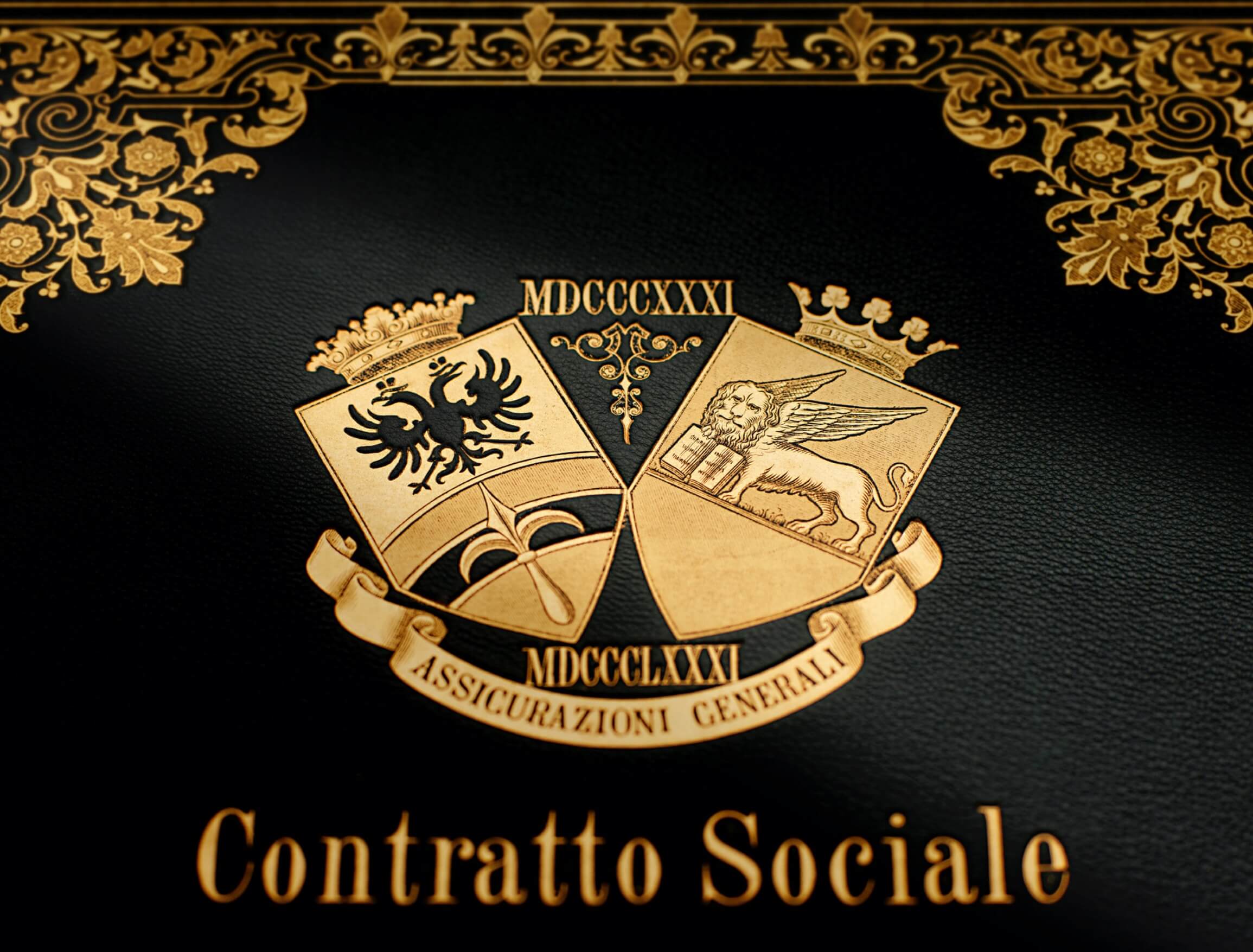Eagle and lion: identity of an international Company
Generali’s first emblem was the double-headed eagle, the symbol of the Habsburg Empire, a privilege granted to the company with the Sovereign Resolution of January 25th, 1833. But today the company’s more famous logo is the winged lion, the symbol of Venice, with its hind legs in the water and its forelegs on land, symbolising the amphibious domain of the Republic of Venice. So why did Generali change from the eagle to the lion? To understand this, we need to think about Trieste’s position.
Between the eighteenth and nineteenth centuries, the city had become one of the most important commercial trade centres of south-eastern Europe. In 1719, to enhance its status as a natural outlet to the sea of his kingdom, Charles VI of Habsburg had granted it a free port licence, with a series of privileges and economic, legal, and administrative measures that had completely restyled the city. The free port of Trieste was able to attract entrepreneurs and create a new trade economy. Indeed, it granted favourable export tariffs and provided rapid links with the East and central-northern Italy, as well as with the inland Austrian countries. In the 1820s, scientific progress made it possible to overcome geographical limits and the rapid development of the railways was matched by that of steam navigation. The Austrian Lloyd, one of the oldest shipping companies in the world, was founded in 1836 in Trieste, also chosen as Generali’s headquarters due to its strategic position.

The Social Contract of Assicurazioni Generali Austro-Italiche (Trieste, December 26, 1831)
Assicurazioni Generali Historical Archive
ph. Massimo Gardone
Giuseppe Lazzaro Morpurgo, the mastermind of the new company, was convinced of the welfare function performed by private insurance companies and supported the growing commercial momentum with adequate insurance structures, engaging in all forms of transport insurance, not only maritime. The company effected a further improvement in quality by concerning itself with multiple branches, including the life insurance sector, and addressing broad operating markets: intentions which are summed up in the choice of the company name, Assicurazioni Generali Austro-Italiche. The adjective Generali shows that the company did not intend to limit itself to traditional insurance, but to extend to any other branch permitted by law, while the title Austro-Italiche is also indicative of the countries in which the company intended to develop its business.
Such a name demonstrated Generali’s aspiration to unite interests, places, and people, addressing both the Habsburg Empire and the Italian states. As proof of this, the company’s entire organisational, social, and financial structure was constructed on two main pillars: the Head Office in Trieste, in charge of the monarchy and abroad, and the Venetian Office in Venice, responsible for the Italian peninsula. In 1831 these offices belonged to different administrative bodies from a political point of view, even within the Empire: Trieste to the Habsburg Monarchy, Venice to Lombardy-Venetia.
But from Lombardy-Venetia, during the Risorgimento, the roar of the lion was heard. Venice rose up against the Austrians, establishing the Republic of St. Mark in March 1848. And it should be noted that important exponents of Generali’s Venetian Office worked alongside Daniele Manin, Niccolò Tommaseo, and other leaders of the revolt, including Leone Pincherle, a personal friend of Manin, Isacco Pesaro Maurogonato, and Daniele Francesconi.
After the riots of 1848, Generali removed the adjective Austro-Italiche from the company name for practical reasons, and the Venetian Office subsequently adopted the lion of St. Mark as a symbol of identification in the territories in which it operated. The use of the St. Mark lion apparently dates back to 1860. Since then, the lion has been used with a certain regularity on policies and correspondence issued in the Italian territory. The Head Office in Trieste, located in imperial territory, continued to use the double-headed eagle until the First World War. The use of the lion was adopted gradually, and initially only on certain types of documents.
The transition from the eagle to the lion is just one example of Generali’s openness to other cultures. The Central-European setting in which the company emerged was extremely advantageous, both for its expansion around the world and for the insurance business itself. However, it was thanks to the principles of sharing that Generali was able to offer services to maritime and land trade with the Empire and, at the same time, expand its business in the domestic market. In the early 1880s, it had become so widespread geographically that a new organisational strategy was required: it was decided that affiliated companies would be established, sometimes specialising in certain areas of the business, headed by young people trained in the company, who carried Generali’s values and knowledge far and wide.
A few years after its foundation, agencies developed throughout the Habsburg Empire, in the Italian peninsula, in the German states, and in the main European ports. The experience gained on an international level and the stability now established created a new impetus from the 1870s until the end of the nineteenth century, particularly towards the Anglo-Saxon markets.
In the 1850s, Generali was the leading insurance company in the Empire and, in 1870, it was also established as the top company in Italy. Such a dizzying growth did not however go to its head, because it was supported by two sturdy wings: openness and sharing, ideas rooted in the company since it was founded. According to this rule, where the eagle flew, so too could the lion.
